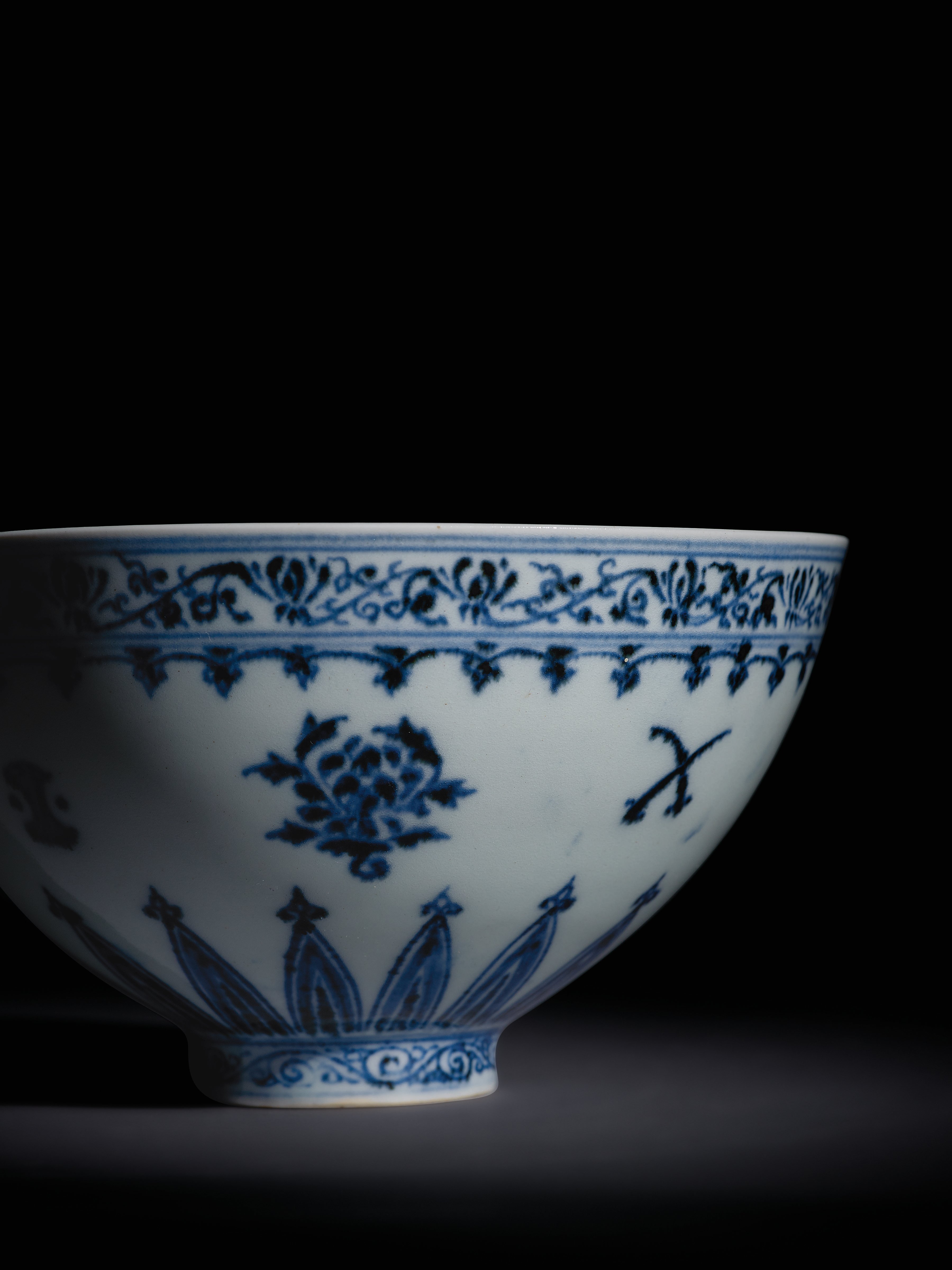
A remarkable Ming dynasty-era bowl with a cobalt blue and white floral motif sold for $721,800 at Sotheby’s New York yesterday. Before the auction house appraisers identified the porcelain bowl as an extremely valuable Chinese antique, the shrewd consignor bought it at a yard sale in New Haven, Connecticut, for just $35.
“Today’s result for this exceptionally rare floral bowl, dating to the 15th century, epitomizes the incredible, once in a lifetime discovery stories that we dream about as specialists in the Chinese art field,” said Angela McAteer, head of the Chinese works of art department at Sotheby’s New York. “Upon viewing the bowl for the first time, our team immediately recognized the quality of this undisputed gem, and it is a reminder that precious works of art remain hidden in plain sight just waiting to be found.”
The imperial piece, which dates to the 1400s, was made for the Yongle court of the Ming dynasty, which is known for its distinctive porcelain style.
Blue and white “floral” bowl, Ming Dynasty, Yongle Period. Image courtesy of Sotheby’s.
“The style of painting, the shape of the bowl, even just the color of the blue is quite characteristic of that early, early 15th-century period of porcelain,” McAteer told the New York Post.
Made in the traditional tapered shape of a rounded lotus bud or chicken heart lotus, supported by a ring-shaped foot, the bowl is decorated with peony, chrysanthemum, and pomegranate flowers in a silky glaze.
Blue and white “floral” bowl, Ming Dynasty, Yongle Period. Image courtesy of Sotheby’s.
There are only six known pieces like it in the world: two at the National Palace Museum in Taipei; one in the British Museum; one in the Victoria & Albert Museum, London; and one in the National Museum of Iran in Tehran.
How an example wound up at a Connecticut yard sale is “a frustrating mystery,” McAteer told CNN.
At the auction, which was part of Sotheby’s Asia Week New York sales, the bowl sparked a four-person bidding war, finally hammering down at $580,000 before premiums. The pre-sale estimate was between $300,000 and $500,000.